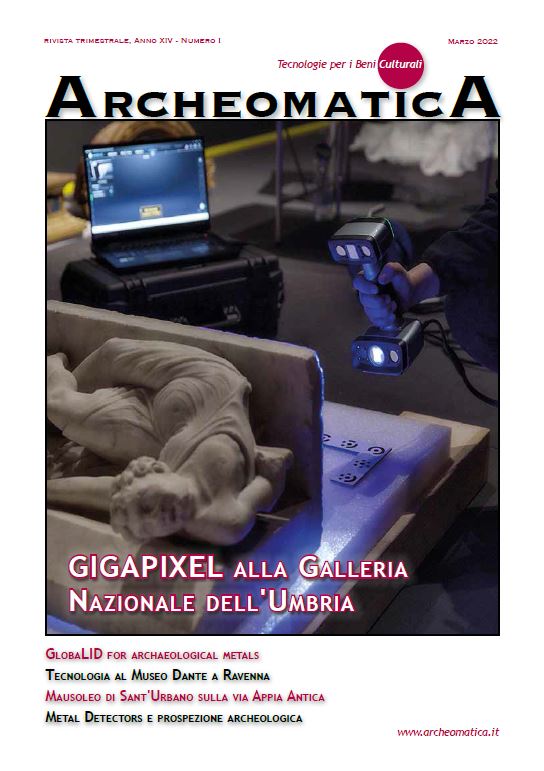GlobaLID: A new database and interactive web tool for provenancing archaeological metals
Abstract
Lead isotope signatures of non-ferrous metals are a well-established approach to tracing ore sources, which can provide important information to reconstruct past exchange networks. Like many other provenancing methods, the usefulness of lead isotopes in provenance studies relies heavily on a comprehensive reference database. GlobaLID aims to provide an infrastructure for a central storage of lead isotope data. It consists of a comprehensively evaluated database with extensive geological and contextual information and of a web application that provides an intuitive interface to interact with the database, options for comparison with own sample data, and to design and download publication-ready lead isotope plots.
Riferimenti bibliografici
Artioli G, Angelini I, Nimis P, Villa IM (2016) A lead-isotope database of copper ores from the Southeastern Alps: A tool for the investigation of prehistoric copper metallurgy. J. Archaeol. Sci. 75:27–39. https://doi.org/10.1016/j.jas.2016.09.005
Baron S, T?ma? CG, Le Carlier C (2014) How Mineralogy and Geochemistry Can Improve the Significance of Pb Isotopes in Metal Provenance Studies. Archaeometry 56:665–680. https://doi.org/10.1111/arcm.12037
García de Madinabeitia S, Gil Ibarguchi JI, Santos Zalduegui, J. F. (2021) IBERLID: A lead isotope database and tool for metal provenance and ore deposits research. Ore Geology Reviews 137:104279. https://doi.org/10.1016/j.oregeorev.2021.104279
GlobaLID Core Team (2021) GlobaLID web application: V. 1.0, database status: 15 November 2021. https://globalid.dmt-lb.de/
Killick DJ, Stephens JA, Fenn TR (2020) Geological constraints on the use of lead isotopes for provenance in archaeometallurgy. Archaeometry 62:86–105. https://doi.org/10.1111/arcm.12573
Klein S, Rose T, Westner KJ, Hsu Y-K (2022) From OXALID to GlobaLID: Introducing a modern and FAIR lead isotope database with an interactive application. Archaeometry. https://doi.org/10.1111/arcm.12762
Stos-Gale ZA, Gale NH (2009) Metal provenancing using isotopes and the Oxford archaeological lead isotope database (OXALID). Archaeol AnthropolSci 1:195–213. https://doi.org/10.1007/s12520-009-0011-6
Westner KJ, Rose T, Klein S, Hsu Y-K (2021) GlobaLID – Global Lead Isotope Database: V. 1.0. GFZ Data Services
Wilson L, Pollard AM (2001) The provenance hypothesis. In: Brothwell DR, Pollard AM (eds) Handbook of archaeological sciences. Wiley, Chichester, New York, pp 507–517.
Dowloads
Pubblicato
Fascicolo
Sezione
Licenza
Gli autori che pubblicano su questa rivista accettano le seguenti condizioni:- Gli autori mantengono i diritti sulla loro opera e cedono alla rivista il diritto di prima pubblicazione dell'opera, contemporaneamente licenziata sotto una Licenza Creative Commons - Attribuzione che permette ad altri di condividere l'opera indicando la paternità intellettuale e la prima pubblicazione su questa rivista.
- Gli autori possono aderire ad altri accordi di licenza non esclusiva per la distribuzione della versione dell'opera pubblicata (es. depositarla in un archivio istituzionale o pubblicarla in una monografia), a patto di indicare che la prima pubblicazione è avvenuta su questa rivista.
- Gli autori possono diffondere la loro opera online (es. in repository istituzionali o nel loro sito web) prima e durante il processo di submission, poiché può portare a scambi produttivi e aumentare le citazioni dell'opera pubblicata (Vedi The Effect of Open Access).





